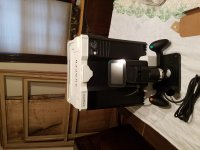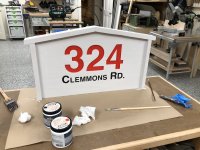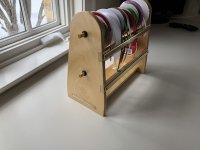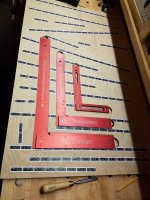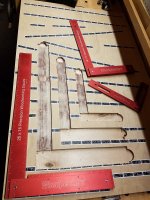I had some time to play with my shaper origin, and so far I am pleased.
I am in the process of making a cabinet to store multiple HF small parts bins, ala adam savage and more recently bob Claggett from “I like to make stuff”. I wanted the dividers to have a cutout that matched the handles to make grabbing the bins easier.
It took me more time to design the shape in fusion 360 than it did to cut it out of mdf, which I then used as a template for the already cutout dividers. The design is not complicated (rectangular inset with 2x 5mm fillets and 2x 20mm fillets), but I need more fusion experience. Once designed, the origin addin to fusion created the svg, which was the placed on the flash drive.
I had some trouble aligning the drawing with the edge of the mdf, but I chalk this up to lack of experience. I am also not completely bought in to the concept of cutting all the parts out with the origin yet from a large piece of plywood - I would rather make templates and revert to known techniques; this may change over time, but would end up using more shaper tape.
More to come.
I am in the process of making a cabinet to store multiple HF small parts bins, ala adam savage and more recently bob Claggett from “I like to make stuff”. I wanted the dividers to have a cutout that matched the handles to make grabbing the bins easier.
It took me more time to design the shape in fusion 360 than it did to cut it out of mdf, which I then used as a template for the already cutout dividers. The design is not complicated (rectangular inset with 2x 5mm fillets and 2x 20mm fillets), but I need more fusion experience. Once designed, the origin addin to fusion created the svg, which was the placed on the flash drive.
I had some trouble aligning the drawing with the edge of the mdf, but I chalk this up to lack of experience. I am also not completely bought in to the concept of cutting all the parts out with the origin yet from a large piece of plywood - I would rather make templates and revert to known techniques; this may change over time, but would end up using more shaper tape.
More to come.

